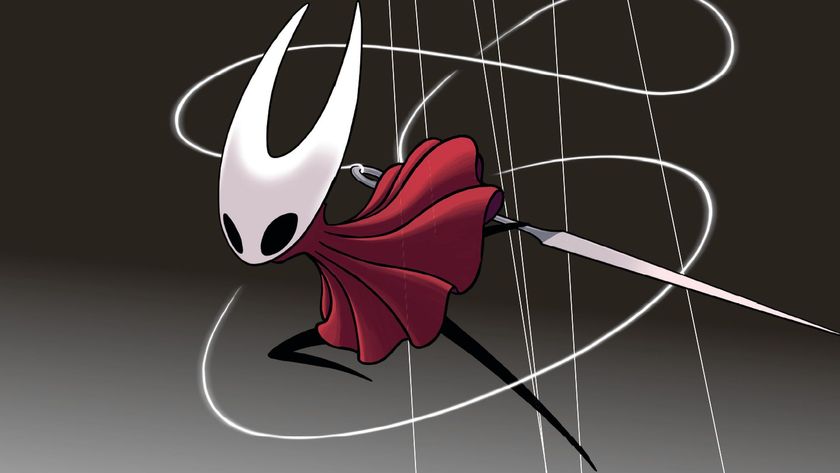I've never played Castlevania, where's the best place to start?
Video games have their share of long and storied franchises. But around the seventh or eighth sequel, it can be difficult for newcomers to know where to start. These guides will point you in the right direction, and maybe you'll find a new favorite.
Curse that Dracula. No matter how many times you banish him from this plane of existence, sending his gothic castle crumbling to the ground, both he and his haunted abode always come back. That's the basis for Konami's storied Castlevania series, which chronicles generations of noble warriors as they do battle against the legendary vampire. The franchise's attempts at branching out into 3D action, motion-controlled fighting, and pachinko machines range from pretty good to abysmal, but tight 2D sidescrolling has always been the beating heart of Castlevania. And Castlevania: Symphony of the Night is the apex of that finely tuned 2D design, effortlessly withstanding the test of time whether you're playing the original PlayStation game, the Xbox Live Arcade port, or hell, even the rare Sega Saturn version. Here's why:
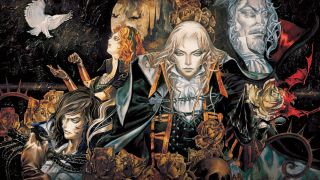
The story may be hokey, but it's got heart. Yes, this game is the origin of such lines as "What is a man? A miserable little pile of secrets." Goofy writing aside, Castlevania games have always prioritized satisfying monster-slaying over complex character development. But if you give SotN's threadbare plot and melodramatic voice acting a little time, they're bound to grow on you. There's a charismatic suaveness to our impossibly handsome hero, Alucard, the half-human son of Dracula who struggles to make meaning of his ancestry. And whenever Alucard crosses paths with the eccentric members of the supporting cast, their exchanges give you the sense you're not the only one exploring this castle with a purpose. If you've played the stellar action RPG, Bloodborne, the NPCs in SotN serve much the same beneficial purpose: enemies and allies with their own agendas who make this adventure feel much bigger than just your main character's mission.
You can play at your own pace. SotN switched up the established Castlevania structure of linear level progression by aping Super Metroid, presenting you with a gigantic, segmented world to explore with the help of a constantly updating map. It's a design that works just as beautifully for Alucard as it did for Samus, giving you a profound feeling of freedom to chart out new territory and deduce where you want to go next. Getting lost in Dracula's castle is just an opportunity to explore avenues you might've missed, and the plentiful save rooms give you the flexibility to play for a few minutes or an hours-long marathon. Each area is meticulously arranged so that it just works whether you're striding through it from the left or right, above or below, and new zones open up at whatever pace feels best for you. Once you've gotten the lay of the land, you're free to speed-run to your destination or comb every inch of the castle's interior looking for secrets.
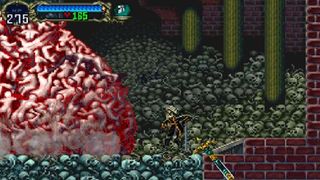
It's the quintessential slice of the Castlevania universe. The Castlevania games always do a good job of using age-old mythologies and classic movie monsters for inspiration on enemy designs. SotN's wildly diverse bestiary has plenty of the series' staple enemies, like a wide variety of reanimated skeletons, leaping Flea Men and mermen, those pesky floating Medusa heads, and giant floating skulls. But SotN also pushed the series toward a wide array of brilliantly unconventional designs. As you delve deeper into the castle, Alucard has to go up against creatures like deadly plants with nude maidens blooming out of them, a procession of featureless, drone-like humans amassing into a colossal orb called the Granfaloon (later known as Legion), and Beezelbub, a gigantic, rotting corpse (suspended in the air by meathooks) that's the literal Lord of the Flies.
Instead of taking the traditional Castlevania approach of 'hit anything that moves until it bursts into flames', many enemies have hidden weaknesses to certain items (more on those in a bit) if you can suss them out. Whether you're facing an intimidating boss or one of Dracula's rank-and-file lackeys, it's clear that each and every enemy was made with the utmost care. Same goes for the environments: though SotN primarily takes place within the castle walls, the various wings, dungeons, and towers you'll explore capture the key themes of gothic worlds nicely, feeling distinct yet cohesive and making it easy to mentally map out your progress.
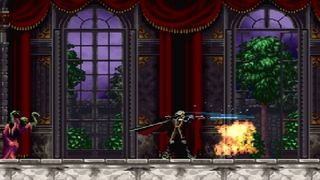
The presentation is exquisite. SotN is a veritable feast for your eyes and ears. The graphics are the beautiful intersection of 16-bit visuals and 32-bit effects, featuring gorgeous sprite work enhanced by animations and flourishes that wouldn't be feasible on a Super Nintendo. The ornate character designs and portraits by artist Ayami Kojima have become the defining aesthetic for the entire Castlevania franchise (thank goodness she's returning to work on the Kickstarted spiritual successor, Bloodstained). And the score is phenomenal, effortlessly flitting between grandiose orchestral pieces, electric-guitar-driven jams, and even some downright funky grooves. Composer Michiru Yamane perfectly nails the musical balance between creepy and catchy, and the soundtrack will continue to delight you even after hours of exploration.
Sign up to the 12DOVE Newsletter
Weekly digests, tales from the communities you love, and more
You're in complete control of Alucard. There's an additional wrinkle to SotN atop the Metroid-style framework: Alucard's RPG-style progression, which lets you level up by slaying enemies, tweak individual stats, and equip a staggering array of different items. Alucard doesn't fight with the metallic whips made famous by the Belmont clan, but his diverse arsenal of swords, clubs, shields, fist weapons, and spells (executed with fighting-game-esque commands) make him totally malleable to whatever playstyle you prefer. Later on, you'll even unlock the three new forms for Alucard, giving you the ability to skip some encounters entirely or traverse the castle in previously unseen ways. This level of customization is just another facet of SotN's brilliant systems that set the series standard for years afterward. Oh, and after you've beaten the game (and hopefully earned your desired ending), you unlock Richter Belmont - whip and all - whose acrobatic special moves add another dimension to the gameplay.
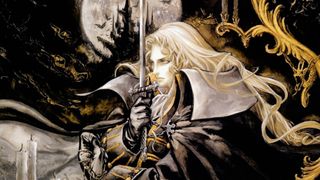
Symphony of the Night is a veritable feast for your eyes and ears.
Once you finish Castlevania: Symphony of the Night, what should you play next? That depends on whether you'd like to see what the series was like before or after SotN - that's just how immensely influential this game is to the entire Castlevania legacy. You definitely want to stick to the 2D games, so I'd recommend:
Super Castlevania 4 If you want a taste of what defined Castlevania before SotN, Simon Belmont is at his very best in this Super Nintendo classic. The focus is purely on action rather than exploration, with a linear level progression that's meant to be tackled in one intense go (though luckily there is a password system, because this game is damn hard). Simon's movements can feel a bit stiff after playing as the graceful Alucard, but that's made up for by the empowering amount of control you have over the satisfying cracks of Simon's whip (included the infamous 'limp mode' that lets you flail around wildly for rapid damage).
Castlevania: Aria of Sorrow The post-SotN games found their niche on handhelds, mimicking Symphony's overall style while building on some of its core designs. Aria of Sorrow on Game Boy Advance introduces the most interesting addition: the Tactical Soul system, which lets you absorb the essences of enemies once they're slain and use them to your advantage. Every baddie has a unique soul, infusing your adventure with an addictive 'gotta catch 'em all' mentality as you experiment with the souls' various effects. New protagonist Soma Cruz is just as devilishly handsome as Alucard, but this castle actually appears in the (not so far) future of 2035, which opens up some interesting new avenues for design outside the usual gothic fare (you can even wield a gun, for crying out loud).
Lucas Sullivan is the former US Managing Editor of 12DOVE. Lucas spent seven years working for GR, starting as an Associate Editor in 2012 before climbing the ranks. He left us in 2019 to pursue a career path on the other side of the fence, joining 2K Games as a Global Content Manager. Lucas doesn't get to write about games like Borderlands and Mafia anymore, but he does get to help make and market them.

